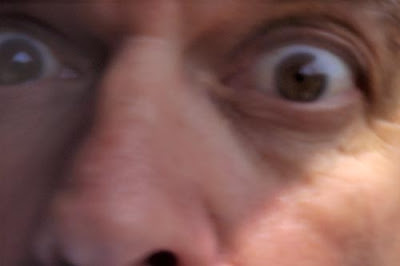World Pinhole Photography Day was yesterday, 27 April. Did anyone else try to take photographs without glass?
I experimented with my Heineken lens (see it here) and was startled when it turned out to be a long telephoto.
I suppose I shouldn't have been surprised. When I thought about how the rays of light passed through the pinhole to hit the sensor it was obvious. But, somehow, I'd never considered it before.
That was the great thing about trying this. It made me think about a number of things that I had previously taken for granted.
Another example: the first photos with the Heineken lens were a total disaster - abstract swirls of light, but no recognisable image. Initially I wondered if I'd got the pinhole the right size. But then I realised that the inside of the can was silvered and the light was bouncing wildly around inside it. Lining it with matte black paper solved that problem.
Anyway, to cut a long story short, Heineken isn't going to challenge Nikon, Canon, Tamron or Sigma just yet. I got some images, but they weren't much to look at. Part of the problem was that it was difficult to see what the camera was pointing at. The pinhole let in so little light that the viewfinder was dark.
I removed the can and stuck some duct tape with aluminium foil over the lens mount, making a pinhole in the foil. That turned out to be a wide angle lens and gave better results.
Another learning step resulted from me making the first pinhole too small. I was under the impression that it should be as small as possible. But that just gave a horribly fuzzy image due (I now know) to a process called diffraction. I also discovered that this applies to conventional lenses too. Stop them down to their minimum aperture and you lose picture quality. Same physics.
Anyway, in the end I found a suitable size for the hole and took some photos discovering, on the way, that a pinhole lens has the most amazing depth of field. Must experiment more with that, later. But, in the meantime, here's the image I've submitted to the international web site:
I experimented with my Heineken lens (see it here) and was startled when it turned out to be a long telephoto.
I suppose I shouldn't have been surprised. When I thought about how the rays of light passed through the pinhole to hit the sensor it was obvious. But, somehow, I'd never considered it before.
That was the great thing about trying this. It made me think about a number of things that I had previously taken for granted.
Another example: the first photos with the Heineken lens were a total disaster - abstract swirls of light, but no recognisable image. Initially I wondered if I'd got the pinhole the right size. But then I realised that the inside of the can was silvered and the light was bouncing wildly around inside it. Lining it with matte black paper solved that problem.
Anyway, to cut a long story short, Heineken isn't going to challenge Nikon, Canon, Tamron or Sigma just yet. I got some images, but they weren't much to look at. Part of the problem was that it was difficult to see what the camera was pointing at. The pinhole let in so little light that the viewfinder was dark.
I removed the can and stuck some duct tape with aluminium foil over the lens mount, making a pinhole in the foil. That turned out to be a wide angle lens and gave better results.
Another learning step resulted from me making the first pinhole too small. I was under the impression that it should be as small as possible. But that just gave a horribly fuzzy image due (I now know) to a process called diffraction. I also discovered that this applies to conventional lenses too. Stop them down to their minimum aperture and you lose picture quality. Same physics.
Anyway, in the end I found a suitable size for the hole and took some photos discovering, on the way, that a pinhole lens has the most amazing depth of field. Must experiment more with that, later. But, in the meantime, here's the image I've submitted to the international web site:

More contributions, from all over the world, can be seen here. Some are wonderfully inventive, or just plain bizarre. Enjoy!




No comments:
Post a Comment